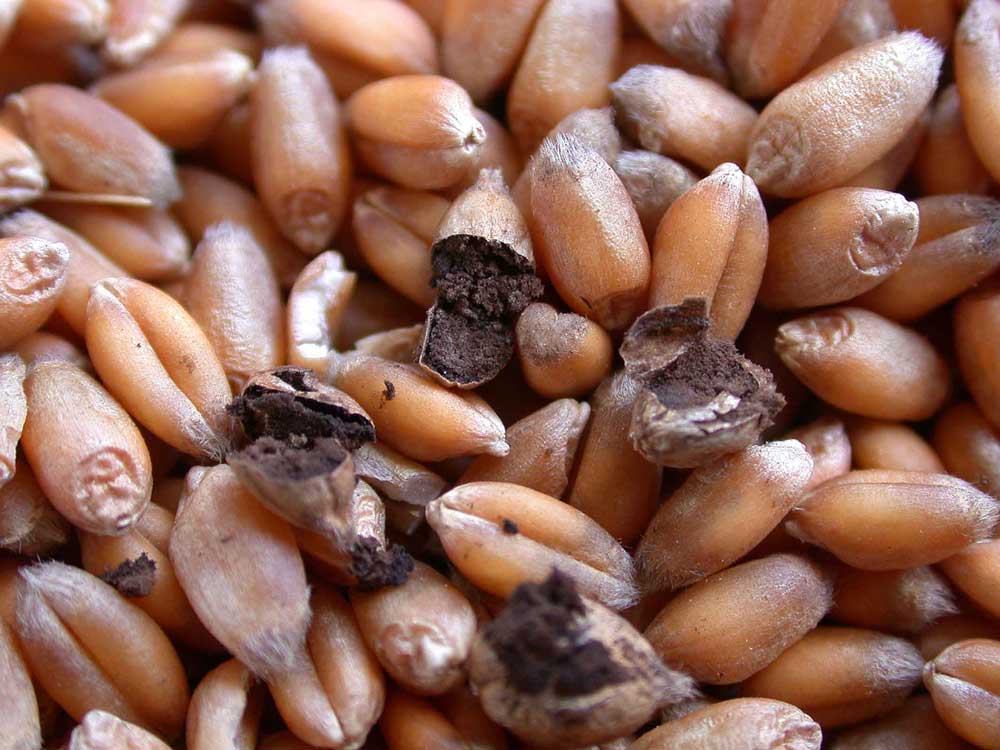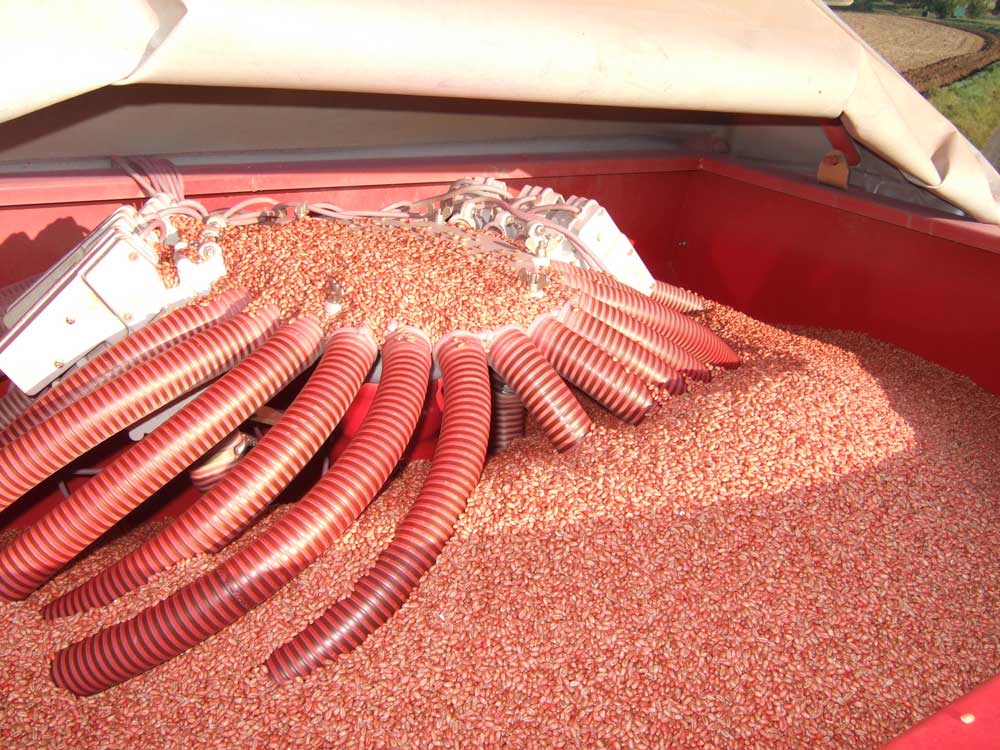Non-chemical seed dressing?
By Dr Michael Hess
Despite overall application of chemical seed dressing incidence of seed-borne diseases, even under conventional management, has increased in recent years. Reasons can include errors in the composition and concentration of active ingredients in the dressing or poor dressing application techniques. But a closer look at the problem shows that current seed dressings and their active ingredient composition and content, fail to control all diseases with the same efficacy. Especially difficult to control, because of their systemic infection of the seed embryo, are smut diseases. With bunt, too, most seed dressings show insufficient efficacy.
Why don’t such gaps in efficacy lead more often to epidemics?
As with most diseases, the emergence of an epidemic is not only determined by the presence of the respective pathogens. Disease severity can also vary very strongly depending on annual weather conditions, region, crop variety and soil. Especially with bunt, the conditions that particularly favour outbreaks have been investigated since the end of the 1990s and models developed to help with assessing risk in this respect. Because the pathogen is difficult to combat, it is classified as a reason for quarantine in different countries, e.g. China, with an associated import stop for grain from affected countries such as Germany and the USA. Because the disease is encouraged by cool climate conditions and long periods of snow cover, high altitude growing regions are seen as more disease susceptible. The outbreaks in certain disease years indicate that a standardised chemical seed dressing does not necessarily offer sufficient protection. Unfortunately, the gaps in efficacy with chemical protection could well become greater in the coming years rather than closing through introduction of new active ingredients.
Biological alternatives ...
Particularly where crops are being grown under organic management, rising incidence of seed-borne disease requires development and application of alternative strategies including, in recent years, various biological treatments. Carefully selected strains of soil or root organisms (e.g. Pseudomonas, Bacillus, Trichoderma), natural nutrients or also processed vegetable matter all help reduce infection through antagonism, bio-stimulation and induced resistance. In such cases, seed is only treated relatively shortly before sowing and is then unable to be stored over longer periods. Because of the specific interaction between substance, plant, disease pathogen, and the increased dependence on weather conditions and soil conditions, controlling disease in this way is not directly comparable with the direct dose-response relationship of a chemical seed treatment. While the direct effect can be variable depending on location, a row of positive effects, e.g. on soil organisms, mycorrhizal interaction and plant health, can be demonstrated. In this association, there have also been reports of soil-borne diseases such as take-all being supressed, a development so far only chemically achievable by very few additional seed treatments.
... and physical ones
As well as biological seed treatments, a series of physical approaches have become established. A simple example comprises mechanical »brushing« of grain. This action can reduce pathogens and dust attached to the seed surface. Dust in connection with seed tends to be ignored. But in some cases, this can be a carrier of substantial loads of detrimental organisms such as Fusarium strains and various problematic sooty moulds, e.g. Alternaria and Cladosporium. Pathogens more firmly established on the seed can be dealt with by hot water treatment. This method has been used for ages, although its high energy input and time requirement, the latter mainly for subsequent drying, makes it unsuitable for larger batches of seed. This has led to the development in recent years of the physical methods of electron treatment and steam sterilisation of seed, both of which permit the effective treatment of large batches of seed as in the chemical approach. With the so-called electron treatment, the seed is moved through a beam of »slow« electrons that, depending on selected depth of treatment, can kill external pathogens right through to the seed coat. Steam treatment is a further development of the hot water approach, but one which can allow larger batches of grain to be effectively »pasteurised«. Such treatments combine many advantages which, alongside the control of more common harmful fungi and also bacteria, nematodes and in part animal pests, also reduce dust and optimise germination potential. Additionally, hot water and steam treatments show in investigations carried out in Great Britain that they are the only ones with a positive effect in control of Ramularia leaf spot which is increasingly difficult to control by chemical treatment because of rising resistance. However, even the physical treatments have their limitations in that soil-borne disease are not controlled and the embryo-situated smut diseases can also not be tackled in this way because treatment might impair subsequent germination.
An integrated approach from Sweden
So we see that all methods of seed treatment have their advantages, but also limitations. A standardised chemical treatment fails to meet the requirements for a risk-based approach to reduction of plant protection substances. No control of the risk of seed-borne diseases is, however, no alternative either. This has led to an integrated approach being followed in Sweden, aimed at satisfying the requirements of the seed market and helping to control the risks from the different pathogen populations in seed batches. Prior to seed treatment, emergence tests are conducted with the seed in soil under cool conditions. This is more realistic, and results more accurate, compared with the commonly used germination test under optimum conditions. Hereby, improvement of emergence following steam treatment of seed is achieved through a combination of disease reduction and improvement of germination potential. The test results can be used to help decide whether a seed batch should be treated biologically, physically or chemically, remain untreated or be rejected as seed. Physical seed treatment with steam is already used in 30% of cases in Scandinavia and expansion of capacity for this approach continues. The proportion of chemically treated seed decreases. Further steam plants are being established in France, Japan and the USA. Alongside its wide efficacy, this method also offers the advantage of suitability for use in combination with biological or chemical seed treatments. Also, treated seed not sown is quite safe to be used for alternative uses. In particular, this combination of treatments offers great potential in the control of difficult to combat or resistant pathogens.




